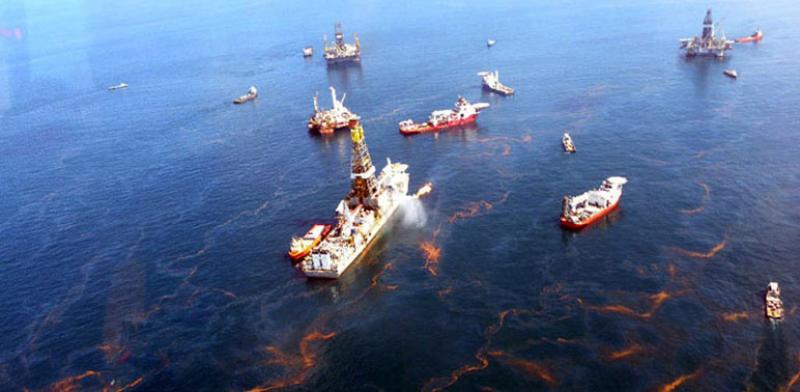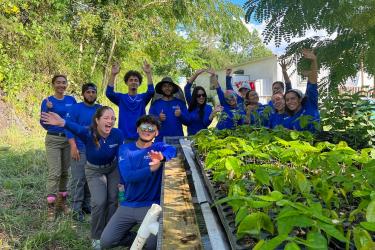When Exxon Valdez ran aground 25 years ago, spilling 11 million gallons of crude oil into Prince William Sound, the results were plainly visible on the nightly news: fouled beaches, oiled carcasses, and closed fisheries.
Responders worked to contain the spill, clean the oil, count the carcasses, and ensure the safety of the nation’s seafood supply. "But the long-term effects of oil in the environment had not yet been well-studied," said Stanley Rice, a biologist with NOAA’s Alaska Fisheries Science Center, now retired, who led a team that researched the impacts of the spill until long after the visible effects were gone. "Valdez was a major turning point."
That team of researchers demonstrated that, even at low concentrations, oil is toxic to fish larvae, although they could not yet say exactly how. Microscopic larvae are unlikely to make the nightly news, but the toxic effects can reverberate through the ecosystem and persist for years. Before Exxon Valdez, scientists focused on the visibly obvious and acute impacts of oil spills. Today they also focus on the subtle, lingering, and more widespread effects.
A Painstaking Experiment
After the spill, biologists found elevated mortality among herring and pink salmon embryos in Prince William Sound. "That wasn't a surprise, because oil was everywhere," said Rice. Looking more closely, they found what are now considered the classic symptoms of crude oil toxicity in developing fish embryos: a curved spine, small jaw and eyes, and fluid accumulation around the heart.
One year after the spill, scientists continued to find elevated mortality in fish embryos. "That was a surprise, because oil was no longer visible in the streams," Rice said. So he and his colleagues began their investigation.
In a painstaking study, they exposed more than 250,000 pink salmon embryos to varying but very low concentrations of oil—too low to cause the severe developmental deformities they found the year before. They raised these normal-seeming larvae in a hatchery, then tagged and released them into the wild. After spending a bit more than a year in the ocean, the salmon came back as adults to spawn, and scientists found that fewer of the exposed individuals made it back. What’s more, the response was dose-dependent—the higher the exposure, the lower the returns.
"These animals didn't just die and float to the top," Rice said. "They went out into the ocean, suffered the stresses of life there, some succeeded, and some didn’t." Oil exposure early in life reduced the fitness of adult fish, and because both herring and salmon fry are important forage for marine mammals and birds, the effects were felt throughout the ecosystem.
Scientific Progress
If science is the search for ultimate causes, great scientific progress has been made in the last 25 years. In the early 2000s, scientists with the Ecotoxicology Program at NOAA’s Northwest Fisheries Science Center in Seattle showed that toxic chemicals in oil specifically target the hearts of developing fish embryos. Most of the other deformities to the spine, jaw, and eyes are secondary effects of a failing heart.
More recently, in the aftermath of the 2010 Deepwater Horizon spill in the Gulf of Mexico, scientists from NOAA Fisheries and Stanford University identified the underlying mechanism of cardiac injury. Crude oil contains certain polycyclic aromatic hydrocarbons, or PAHs, that block ion channels in the heart cells of developing fish. This disrupts the normal process of excitation and contraction, and causes slow and irregular heartbeats.
"The heart is one of the first organs to appear, and it starts beating before it’s completely built," said John Incardona, a developmental biologist with the NOAA Fisheries ecotoxicology lab in Seattle. "Anything that alters heart rhythm during embryonic development will likely impact the final shape of the heart and the ability of the adult fish to survive in the wild."
The recent toxicity assessment focused in part on bluefin tuna because the Deepwater Horizon spill oiled open-ocean spawning grounds for that species. But the structure of ion channels is similar across many species of fish, and comparative studies with other species suggest that the results will apply broadly.
Now that they better understand the underlying mechanism, scientists are developing new technologies, including gene expression arrays, to assess cardiac stress in wild fish exposed to low levels of PAHs. These will be used to monitor fish health in a wide range of habitats that may be affected by future oil spills or other sources of PAHs such as land-based stormwater runoff.
Lessons Learned
"Oil can be toxic to fish larvae at much lower concentrations than we realized twenty-five years ago," said Nat Scholz, leader of the Ecotoxicology Program at NOAA’s Northwest Fisheries Science Center. "This tells us that the footprint of a spill is larger than the scientific community realized back then. Also, we’re now paying much more attention to effects that are delayed in time, as these can have subtle but important impacts on fish populations and, by extension, marine ecosystems.”
The Exxon Valdez disaster also highlights the importance of environmental baseline data. In Prince William Sound, the Alaska Department of Fish & Game had been collecting data on herring and pink salmon populations for years because those species supported important fisheries. That baseline data helped scientists to measure the impact of the spill and to set goals for recovery.
That lesson is particularly important given current plans for energy development in the Arctic. Exploration for oil and gas is underway, and yet little is known about the vulnerability of Arctic species to future spills. If oil becomes trapped beneath the ice, for example, scientists will need to know which species live there and how sensitive they are.
“We need to frontload the science,” said Usha Varanasi, the former director of NOAA’s Northwest Fisheries Science Center, who has experienced first-hand the challenge of conducting research in the middle of a crisis. “We have to take responsibility for disasters before they happen.”
New insights and tools made possible by 25 years of NOAA research will help us to do exactly that.


